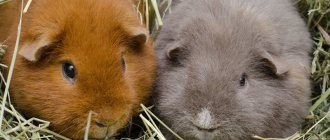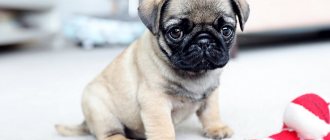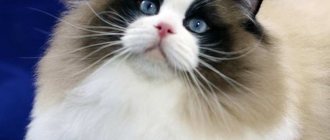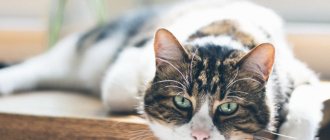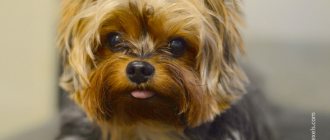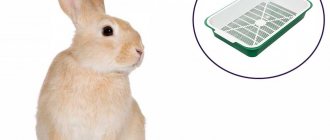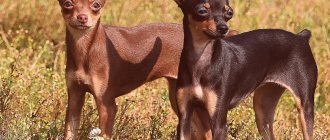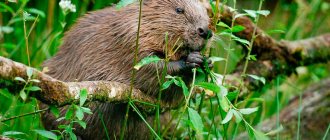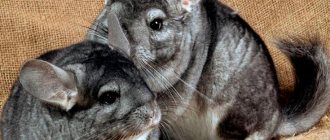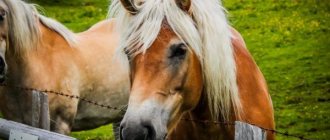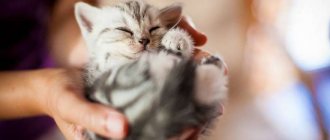How many years do decorative rabbits live at home? The lifespan of domestic fur-bearing animals depends on many factors, including belonging to a particular breed. This article will help you find out which decorative rabbits live longer and how to care for them to prolong their life.
Decorative rabbits
How long do decorative rabbits live on average?
If we talk about the natural environment, then wild rabbits often do not live in it for even five years, they die from various diseases, and die because they are eaten by predators. At home, rabbits can live two or three times longer than wild animals. The owners pamper their rabbits, carefully look after them and pay enough attention. Certain studies have been carried out, as a result of which it was found that if you properly care for a rabbit, it can live up to 15 years. In general, the lifespan of rabbits will depend on many factors, such as the conditions in which the rabbit lives, how well it is cared for, feeding and hereditary characteristics.
A rabbit lives much longer if it does not have injuries, as well as various infectious diseases; the animal should not be exposed to stress. If the rabbit is very frightened or has a shock, then it may have a heart rupture. That is why it is necessary to maintain the most comfortable environment, not to make loud sounds, or too sudden movements. In addition, the life expectancy of a rabbit will be influenced by what breed it belongs to.
Conditions for longevity
The decorative rabbit is a creature with a delicate immune system, and few breeders can keep it in good condition. It is the state of health of animals that most often influences the fact that furry creatures leave this world just a few years after birth. To maximize the life of your pets, you should:
- undergo regular veterinary examinations and vaccinations;
- monitor the quality of the animal’s diet;
- take good care of it;
- castrate males;
- Organize daily walks for the animal.
Also, the life expectancy of domestic animals depends on:
- breeds;
- the health of the rabbit's parents;
- the presence or absence of genetic defects;
- predisposition to diseases.
Every experienced breeder knows how to determine whether a rabbit is old or not. Dwarf rabbits kept in regular home cages lose the sparkle in their eyes as they age. The quality of the coat also deteriorates: it begins to fade and thin out. The previously noticed activity and playfulness disappear. Often, in old age, eared cats become fat and develop a saggy belly. In addition, these animals are shy, and this is a serious problem. A rabbit may even die due to severe fright.
You should not feel sorry for your pet, fearing that castration will bring him a lot of pain and inconvenience. According to the results of numerous studies, operated males and females please their owners for several months longer than their full-fledged relatives. This difference is determined by the reduction in the risk of tumors of the genital organs, which are observed in these animals in at least 20% of cases. In addition, these data were obtained from a study of individuals who had previously undergone regular mating. Rabbits kept in home cages are most often deprived of this opportunity. This increases the risk of cancer.
Fold rabbits and their life expectancy
Fold rabbits are one of the most popular breeds. They are completely small in size, they have a downed body that widens towards the rear. The flattened muzzle and hanging ears are very touching to the owners. The character of such rabbits is very playful, they are active and show their friendliness. That is why such rabbits are often taken into families with children. These rabbits are good at making friends with children and also showing affection. Rabbits with floppy ears live longer than straight-eared rabbits. The age of such a rabbit can reach nine years, but sometimes they live up to 14 years.
Rules for choosing good individuals
Fold rabbits are quite exotic pets, and to purchase a purebred rabbit, you should pay attention to some characteristic features.
Signs of purebredness
Signs of purebred ram rabbits are:
- a rounded “mutton” head with a rather wide forehead and a square-shaped muzzle;
- an almost invisible neck, shallow-lying eyes, a perfectly defined nose;
- firmly set ears, hanging down in the form of a horseshoe, 24 cm long;
- wide and strong chest;
- flat, wide back;
- strong short legs;
- tail tightly fitting to the body;
- thick, shiny, soft, dense coat distributed over the entire body;
- uniform coloring, typical of normal-haired breeds.
Find out if it is profitable to raise rabbits.
Signs of marriage
Signs of marriage in this breed include the following:
- weakly defined small head, clearly visible neck, deep-set eyes;
- vertical position of at least one ear, short ear length (less than 24 cm);
- narrow, shallow chest;
- uneven back with a hump;
- fairly long, curved, hairless paws;
- sparse, matted fur with bald spots on the body;
- atypical color, with spots, “stains” or patterns on the body.
How long do dwarf rabbits live?
Dwarf rabbits also often live with people as pets. These rabbits are very compact and weigh very little. The weight of such rabbits can reach only one and a half kilograms. They have a very friendly character, they are smart, and become well attached to their owner. That is why such rabbits are pets. Such animals are very easy to train and train. Sometimes they even walk with such rabbits and keep them on a leash. Rabbits live shorter, up to eight years. However, there have been cases where a rabbit lived up to 15 years.
History of breeding
It is quite easy to distinguish the ram rabbit from other brothers, because its characteristic feature is its long ears hanging down. The first mentions of furry animals with ears drooping along their heads can be found in the works of Charles Darwin.
It should be noted that drooping ears are the result of a natural mutation: they fit tightly to the animal’s muzzle and thereby make the small rodent look like a lamb. Fold rabbits, or “giants” as they are also called, are the largest among all representatives of their decorative relatives.
For many years, breeders around the world have been working on developing new varieties of this breed of furry animals. For example, Dutch specialists managed to create miniature ram rabbits. The Dutch breed was developed relatively recently by the scientist Adrian de Kock.
His first attempt to cross a Netherland Dwarf with a French ram in 1949 failed because the offspring were not viable.
However, as a result of painstaking work, in 1964, 15 years after the start of selection, the Dutch breed of miniature lop-eared sheep rabbits was officially registered. Soon, Dutch lambs found their way to European countries, and 10 years later they “reached” America.
How to tell if a rabbit is old
Unlike young, very active rabbits, rabbits that have aged become very passive, they are no longer interested in new toys, they eat less, and like to lie down. In addition, the teeth begin to wear out, they become yellow in color, the eyes may become cloudy, and cataracts may appear. The abdomen sags, the fur becomes less thick and shiny. The rabbit may also develop heart and breathing problems. The joints become less elastic, and the rabbit's spine may hurt. In some cases, the pet’s character also changes; he can be irritated by everything, he can be very capricious.
Correct content
Dwarf creatures kept in normal cage conditions require regular walking.
Like other animals, they maintain their health by constantly being on the move. Keeping them in a cramped cage quickly leads to metabolic disturbances. The result is obesity and the appearance of signs of various diseases. In addition, under these conditions, the functioning of the animal’s internal organs begins to change, and the musculoskeletal system also suffers. Paw problems are one of the most common problems when keeping dwarf rabbits.
It is equally important to provide the rabbits with maximum comfort. It concerns not only amenities (bedding, feeders, cages, etc.), but also completely different factors. Dwarf creatures kept in normal apartment conditions must be protected from:
- bright light;
- falls from height;
- loud noise;
- other pets (cats, dogs, rodents, etc.).
The nervous system of these animals is unstable, so you need to try to protect it as much as possible from external threats. Most often, a rabbit is a toy in the hands of a child. This cannot be allowed. In such aggressive conditions for the rabbit, excessive timidity, as well as playing with children, often lead to the premature death of animals.
Those who want to have their own friend in the person of a dwarf rabbit must provide him with everything he needs. The animal quickly gets used to humans, but even over the years it never ceases to be afraid of them. It is very difficult to correct this situation. In addition, the threat from other stimuli does not allow the rabbit to completely relax.
How can you extend the life of a decorative rabbit?
In general, in order for a rabbit to live longer, you need to give it enough attention and care. In addition, you cannot purchase rabbits from random people; it is best to contact a breeder. He will be able to tell you about the breed of the rabbit, the conditions in which it should be kept, as well as its pedigree. In addition, the rabbit must be provided with sufficient activity. To do this, you need to provide a fairly large cage with panels, a wheel and ladders. It is also advisable to allow the rabbit to run around the apartment for several hours. However, it is best to put a harness on your rabbit and take him for a walk in the park.
You cannot place a cage with a rabbit in direct sunlight, it should not be near a radiator, or an air conditioner. Also, the room with the rabbit should not be very humid, hot or cold. You cannot keep a rabbit in the kitchen, hallway or hallway. The ideal water temperature for rabbits is 20°. In the cage you need to place a drinking bowl, a feeder, and a tray. The tray and water need to be changed daily. The sawdust is re-placed approximately once or twice a week. Also, do not place the tray in the grill so that the rabbit does not damage its paws.
Housing
Domestic lop-eared rabbits love to live in spacious cages. This is one of the conditions for their proper maintenance. The cage must have a drinking bowl with clean water and a feeder. It is necessary to provide the animal with sufficient space for movement. These are the conditions that will be ideal for keeping lop-eared animals.
Recommendation! The floor in the cage should be solid and without protrusions, as this can injure the animal.
The cage should be placed in an area of the room where direct rays of the sun do not fall. There should also be no drafts in the room. These factors can negatively affect your pet's health.
Rabbit health
If the rabbit is sick, then it needs to be taken to the veterinarian. In general, you can tell that an animal is sick by looking at some symptoms. For example, a rabbit may become apathetic, close its eyes, drink frequently and breathe heavily. The rabbit may also tremble, have problems with bowel movements and have poor appetite. In order to monitor your rabbit's health, it is enough to periodically show it to a veterinarian. You can get all the necessary vaccinations to prevent your animal from contracting infectious diseases. The first vaccination should be given at one and a half months.
Signs of old age
As a decorative rabbit ages, its appearance changes and its health may deteriorate.
- teeth wear out;
- eyes become cloudy and become sensitive to bright light;
- the ear canal narrows, the rabbit hears poorly;
- the abdomen sags;
- the fur is thinning;
- activity decreases, the rabbit can often sit in one place without moving;
- breathes heavily and may cough.
When choosing and purchasing a young rabbit, there is a greater chance that the rabbit will live much longer. Since the owner will be sure that from an early age the pet had comfortable living conditions and proper nutrition.
Rabbit diet
Often, infectious diseases in an animal appear due to the fact that it is not fed correctly. The owner of a rabbit should be aware that for the animal, food must constantly move through its digestive tract. A new portion of food can push the previous one, which is why the rabbit must constantly chew something. Every day the rabbit needs to be given a large amount of fresh hay. The main part of the vitamins can be supplied to the rabbit with food, vegetables, and herbs. Rabbits simply love cabbage. It should not be given immediately so that the rabbit does not develop diarrhea. Cabbage delivers a huge variety of nutrients to the rabbit’s body.
Eating celery will also be very important for your rabbit. It contains a lot of moisture, as well as a variety of vitamins. Also, thanks to it, teeth can be ground down, phosphorus enters the body, and bones are strengthened. The pieces of celery should be chopped, if you notice your rabbit has loose stools, it is best not to give too much celery.
Rabbits can be given milk for up to three weeks. After this age, milk should not be given. Cottage cheese is prohibited for rabbits. You can also give bell peppers in small quantities, from which the seeds are removed.
After the animal’s body is sufficiently formed and it reaches the age of three months, it can be given fruit. The healthiest foods for a rabbit are bananas with peels, mangoes from which you need to remove the pit, and grapes in small quantities. Once a week you can give a piece of tangerine, and once every two days you can give pieces of apples, from which you need to remove the seeds. It is forbidden to give your rabbit bread, pasta, or baked goods; these products contain a large amount of carbohydrates. You can give a small amount of white bread, as well as crackers. Useful cereals for a rabbit are wheat, oats, and rolled oats. You also need to give the rabbit a variety of branches, thanks to this he will grind down his teeth. The rabbit should be fed three times a day; you can use ready-made food.
Colored dwarf Dutch
A breed that was obtained in the Netherlands. It was officially recognized in 1940. To obtain it, they used hermelins and local small rabbits. Such animals appeared in Russia in 2013.
Characteristic:
- Weight: 800-1300 g.
- Ear length: 5-7.5 cm, straight.
- Wool: medium.
- Color: any.
- Price: 2-7 t.r.
Small rabbits whose weight should not exceed 1300 grams. The head has a rounded shape. The muzzle is wide, the eyes are round and large. The ears are located close to each other. The limbs are short and adjacent to the body.
Rabbit cleanliness and hygiene
To prevent the animal from getting sick, the animal must be kept in good conditions. Regularly clean the cage, remove rabbit droppings, disinfect the bars, wash the feeder and water bowl. You also need to take care of the rabbit's fur; it needs to be combed using a special brush. The rabbit's claws need to be trimmed; both the veterinarian and the owner can do this. In the wild, animals themselves wear down their claws on trees, but at home the rabbit does not have this opportunity. It is also forbidden to bathe a rabbit; this procedure will be extremely stressful for him. Warm water can be used to wash a little under the hind legs. You can only lower the rabbit to the floor when the fur is thoroughly dry.
If a decorative rabbit lives in the house, it can please its owners for many years, however, it is very important to give the rabbit enough love and care. For help from a veterinarian, you can contact a special veterinary clinic.
Colored dwarf
The breed was founded by the German breeder Hoffmann. By 1957, he had received a fairly large population of different colors: Marder, black, gray, Siamese, blue, etc. This breed is distributed throughout the world and is the most numerous.
Peculiarities:
- Weight: 1000-1500 g.
- Ears: 5.5 cm, straight.
- Coat type: medium.
- Any colour.
- How much does it cost: 3-7 tr.
The body of a colored dwarf has the shape of a cylinder. The front legs are short, the head is quite large, but short. The coat is shiny, medium length, thick. There should be no dewlap. Any color is allowed.
Mini lop lionhead
These animals were obtained in England in the early 2000s, but they are not yet officially recognized. The best representatives of the lion-headed dwarf and mini lop breeds were used for breeding.
Peculiarities:
- Weight: 1500-1600 g.
- Ears: 21-25 cm, hanging.
- Coat length: medium, long in the head area (up to 7.5 cm).
- Any colour.
- Cost: 6-13 tr.
These animals are quite miniature. A characteristic feature of the breed is a very thick mane on the head, while the hair on the body is short (no more than 2 cm). The body is dense, strong, the back is rounded. Lion-headed mini-lops have a round head proportional to the body.
